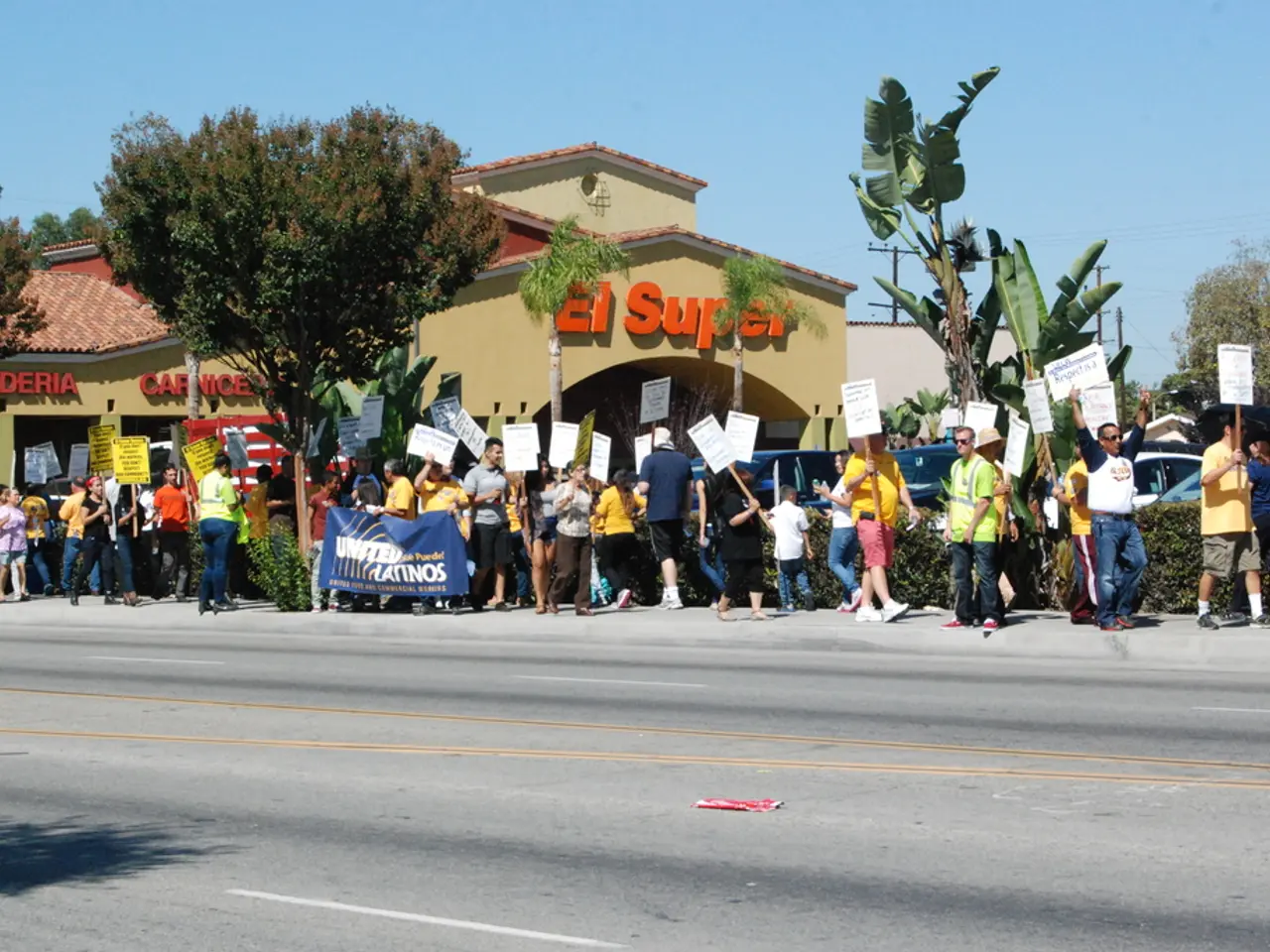Bank reveals justification behind interest rate adjustment
The Bank of Russia, Russia's central bank, reduced the key interest rate by 2 percentage points to 18% on July 25, 2025. This decision was made in response to declining inflationary pressures, including underlying ones, and a slowdown in domestic demand growth.
The central bank has observed a stronger-than-anticipated disinflation since its June decision, alongside signs that tight monetary policy was dampening borrowing costs, supported by ruble appreciation and reduced household consumption. These factors warranted looser financial conditions to address growth concerns, despite divergent analyst opinions.
The Bank of Russia emphasised the need to maintain monetary policy tight enough to return inflation to the target by 2026. This implies an average key rate of 18.8–19.6% in 2025 and 12.0–13.0% in 2026. Consequently, further rate decisions will depend on the sustainability of the inflation slowdown and inflation expectations.
The rate cut aims to support growth as the economy returns to a balanced growth path amid a softening labor market and slower consumption. The easing of borrowing costs should alleviate headwinds on GDP growth. However, the central bank forecasts inflation to decline to 6-7% by the end of 2025 and return to the 4% target in 2026.
While the sources do not explicitly quantify effects on the current account, easing monetary policy amid ruble appreciation and subdued domestic demand may influence trade balances. The Bank of Russia noted that appreciation of the ruble contributes to lower inflation and borrowing costs, which might support a manageable current account surplus given restrained import demand.
The economy is returning to a balanced growth trajectory, and labor shortages, wage growth, and domestic demand are reducing. However, the disinflation trend is still fragile and could be broken by a weakening ruble, increased government spending, crop failure, and acceleration of consumer demand.
It's worth noting that some analysts believe that the current inflation is moving towards the Central Bank's target of 4% per annum after seasonal adjustment. On the other hand, Yevgeny Kogan notes that the defense industry cannot be a source of sustainable long-term economic development.
In contrast to the global average, which is planned at 3.1% in 2025, 2.9% in 2026, and 3.2% in 2027, Russia's GDP growth will significantly lag behind. The current account surplus is projected to decline to $33 billion in 2025 and further to $28 billion in 2026. However, in 2027, the current account surplus is expected to rise to $32 billion and stabilise at that level in 2028.
The Bank of Russia has not changed its forecast for Russia's economic growth rates. Many large companies have reported a decrease in both revenue and net profit in their balance sheets for the first half of 2025. Despite this, the rate cut decision was made to send a neutral signal to the market, implying that a key rate cut in September is not predetermined.
In summary, the rate cut reflects confidence in a sustained disinflation trend and a need to ease financial conditions to foster economic growth, while monetary policy remains cautiously tight to meet inflation targets over the medium term.
[1] Central Bank of Russia, Press Release, July 25, 2025. [2] Reuters, "Bank of Russia cuts key rate to 18% as inflation slows", July 25, 2025. [3] Bloomberg, "Russia's Central Bank Cuts Key Rate to 18% Amid Slowdown in Inflation", July 25, 2025. [4] Financial Times, "Bank of Russia cuts key rate to 18% as inflation slows", July 25, 2025.
- The rate cut by the Bank of Russia is an attempt to support growth in the business sector by easing borrowing costs and alleviating headwinds on GDP growth.
- Despite the reduction in key interest rate, the Bank of Russia plans to maintain a cautious stance in finance, keeping monetary policy tight enough to meet inflation targets over the medium term.




